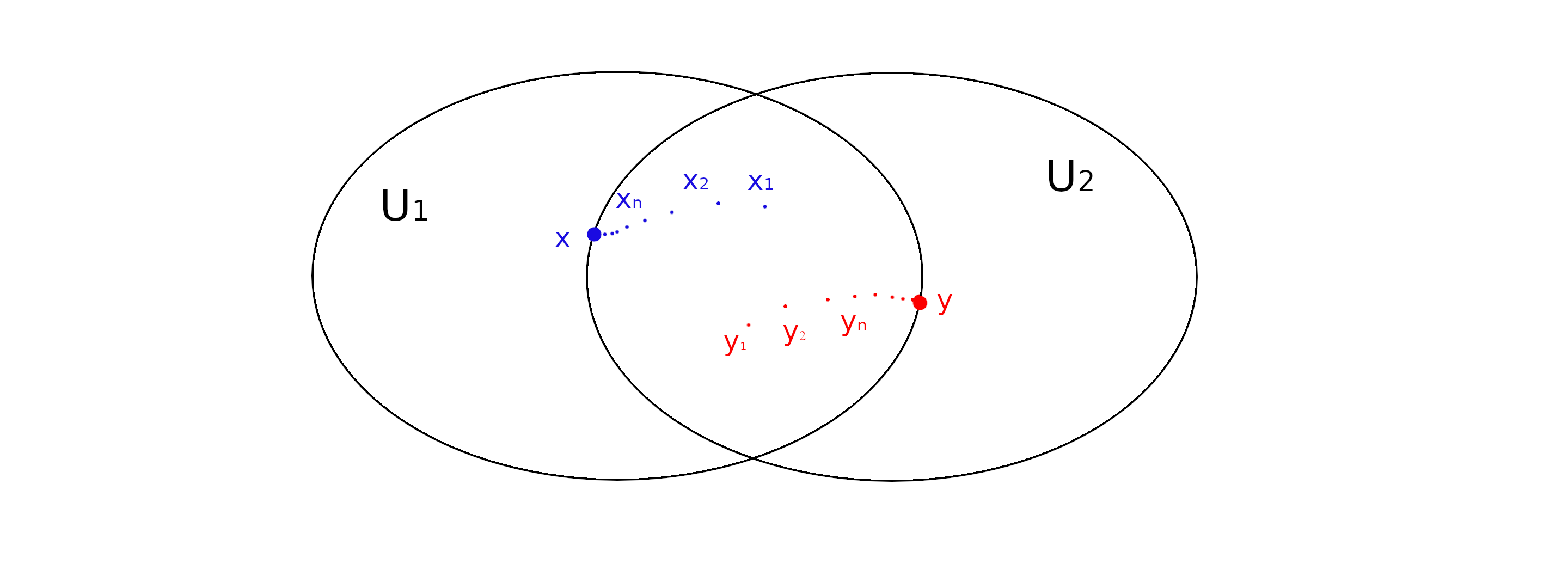Let $\varphi _t$ be a flow, aka. a one parameter group of homeomorphisms of the open subset $\Omega \subseteq {\mathbb R}^n$, which we assume to be continuous in the usual sense that $$ (t, x)\in {\mathbb R}\times \Omega \mapsto \varphi _t(x)\in \Omega $$ is jointly continuous.
One says that $\varphi $ is proper when the map $$ \Psi :(t, x)\in {\mathbb R}\times \Omega \mapsto \big (\varphi _t(x), x\big )\in \Omega \times \Omega $$ is proper, meaning that the inverse image under $\Psi $ of every compact set $K\subseteq \Omega \times \Omega $ is compact.
Properness may also be characterized by the fact that if $\{x_n\}_n$ is a sequence in $\Omega $, converging to some $x$ in $\Omega $, and $\{t_n\}_n$ is a sequence in ${\mathbb R}$, such that $\varphi _{t_n}(x_n)$ converges to some $y$ in $\Omega $, then the $t_n$ are bounded.
Assume thatFor $U_1$ and$i=1,2$, assume that $U_2$ are$U_i$ is an open subsetssubset of $\Omega $, both invariant invariant under $\varphi $, and such that the restricted flows on $U_1$ andrestriction of $U_2$ are proper$\varphi$ to $U_i$ is a proper flow.
Question. Is the flow restricted to $U:= U_1\cup U_2$ proper?
As far as I can see the proof should start as follows: let $\{x_n\}_n\subseteq U$ converge to some $x\in U$, and such that
$$ y_n:=\varphi _{t_n}(x_n)$$ converges to $y\in U$.
If both $x$ and $y$ lie in $U_1$, or if both $x$ and $y$ lie in $U_2$, the conclusion is immediate. So assume that $x\in U_1\setminus U_2$ and $y\in U_2\setminus U_1$. It follows that $ x_n\in U_1,$ and $ y_n\in U_2,$ for all sufficiently large $n$, so we conclude that $x_n$ and $y_n$ eventually lie in $U_1\cap U_2$ by invariance.
 Therefore $x$ is in the boundary of $U_2$, and $y$ lies in the boundary of $U_1$.
Therefore $x$ is in the boundary of $U_2$, and $y$ lies in the boundary of $U_1$.
Can't see where to go from here... After struggling with it for a few hours I am beginning to feel like it might be false :-(
